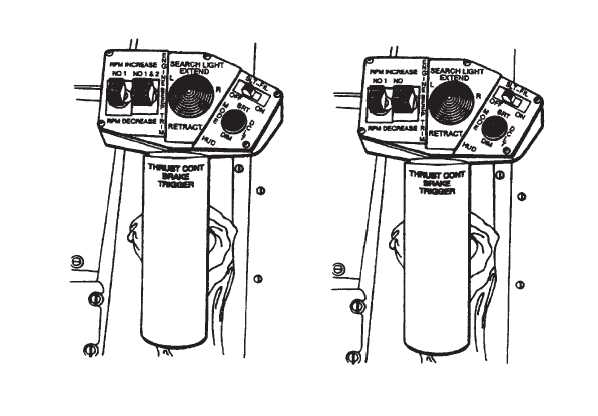TM 1-1520-240-10
2-5-1
SECTION V. FLIGHT CONTROLS
2-5-1. Flight Control System.
The helicopter is controlled by changing the pitch of the
blades either collectively or cyclically. Pitch changes are
made by the pilot’s movement of the flight control which
include a THRUST CONT (control) lever, a cyclic control
stick, and directional pedals. The pilot’s controls are in-
terconnected with the copilot’s controls.
Flight control movements are transmitted through a sys-
tem of bellcranks, push-pull tubes, and actuators to a
mixing unit just aft of the cockpit, next to the forward
transmission. The control movements are mixed to give
the correct lateral cyclic and collective pitch motions to
the rotors through dual hydraulic actuators. These dual
boost actuators are under each swashplate. Each set of
dual boost actuators is normally powered by both flight
control hydraulic systems.
The helicopter is vertically controlled with the THRUST
CONT lever through application of equal pitch to all bla-
des. Directional control is obtained with the directional
pedals by imputting equal but opposite lateral cyclic pitch
to the blades. Lateral control is obtained by application
of equal lateral cyclic pitch to the blades with the cyclic
control stick. The helicopter is controlled longitudinally
with the cyclic stick through application of differential
collective pitch.
In addition, the helicopter has an advanced flight control
system (AFCS). AFCS provides the following features:
a.
Rate damping in all axes and sideslip stability.
b.
Pitch and roll attitude hold and heading hold.
c.
Airspeed hold.
d.
Improved control response in pitch, roll, and
yaw.
e.
Barometric and radar altitude hold.
f.
Automatic coupled turns.
g.
Longitudinal cyclic trim scheduling.
THRUST CONTROL LEVER
(ON HELICOPTER WITH
THRUST CONTROL LEVER
(ON HELICOPTER WITH
714A ENGINE
712 ENGINE
2
Figure 2-5-1. Thrust Control Lever


